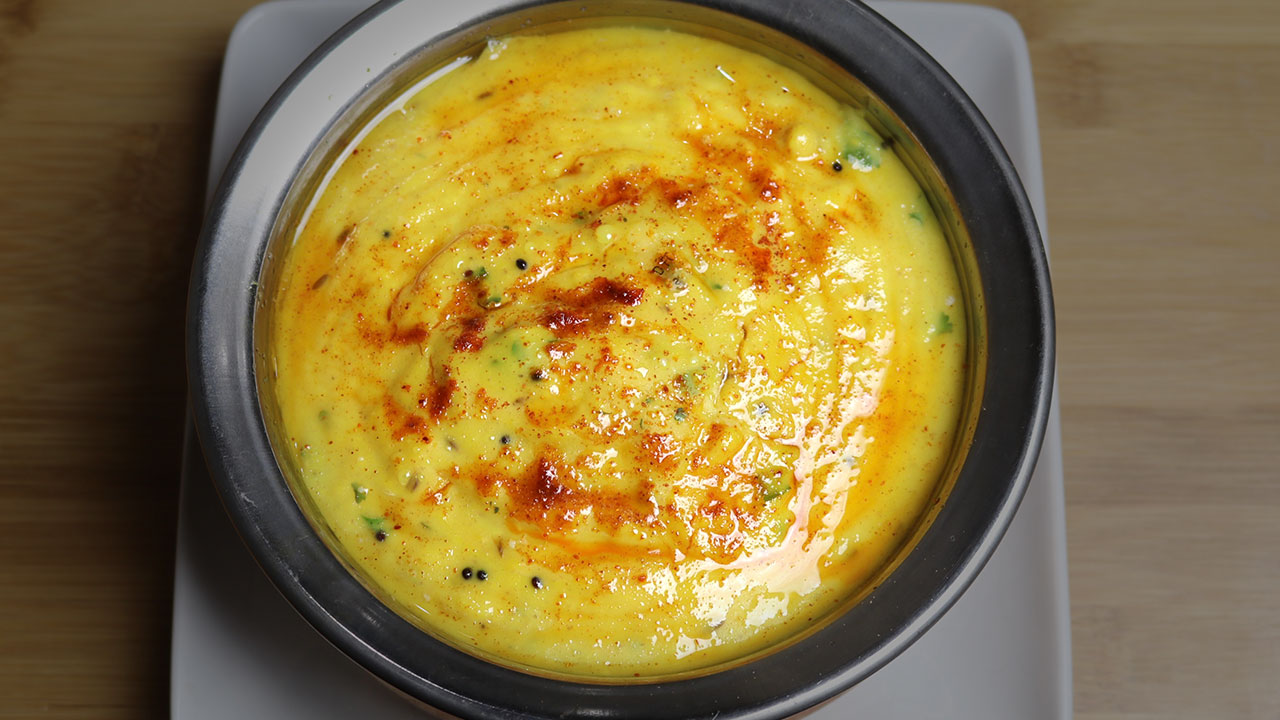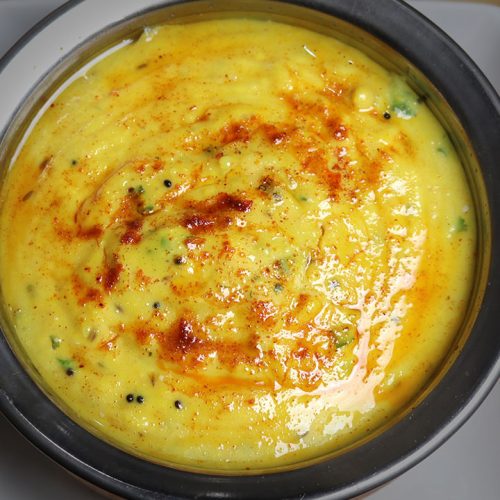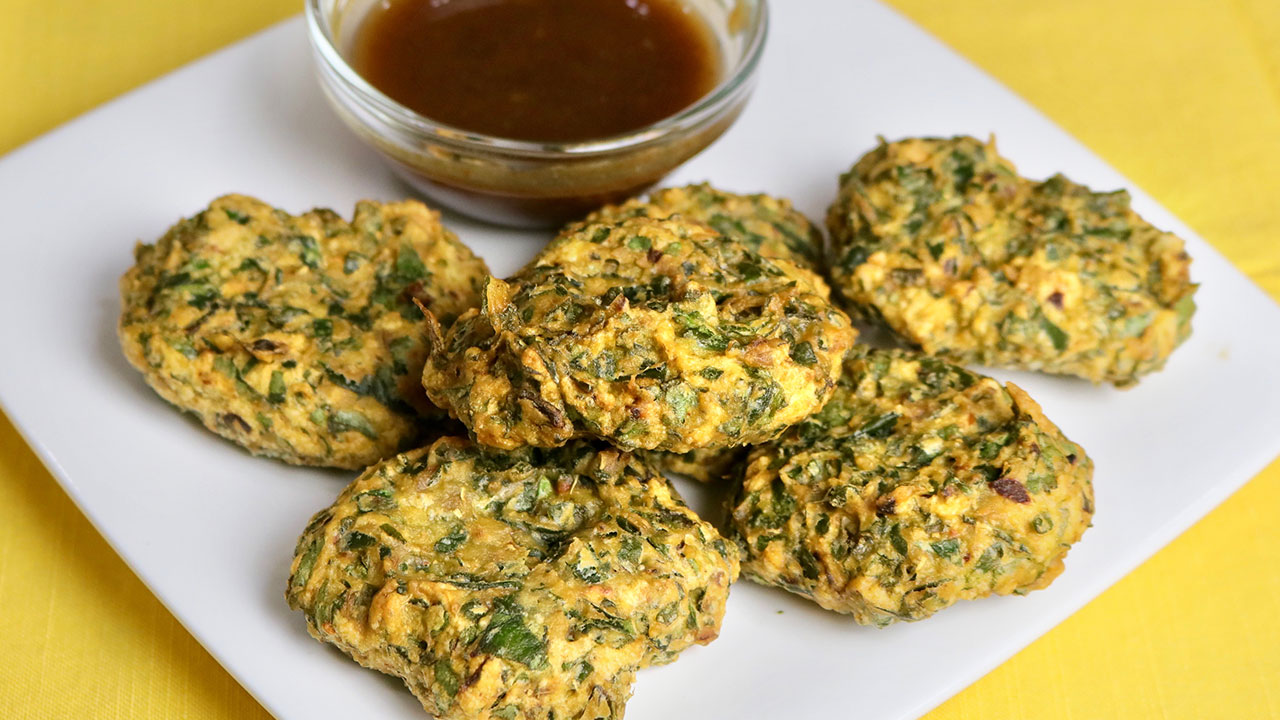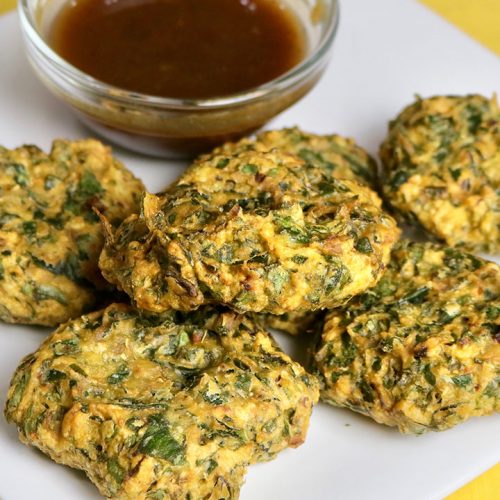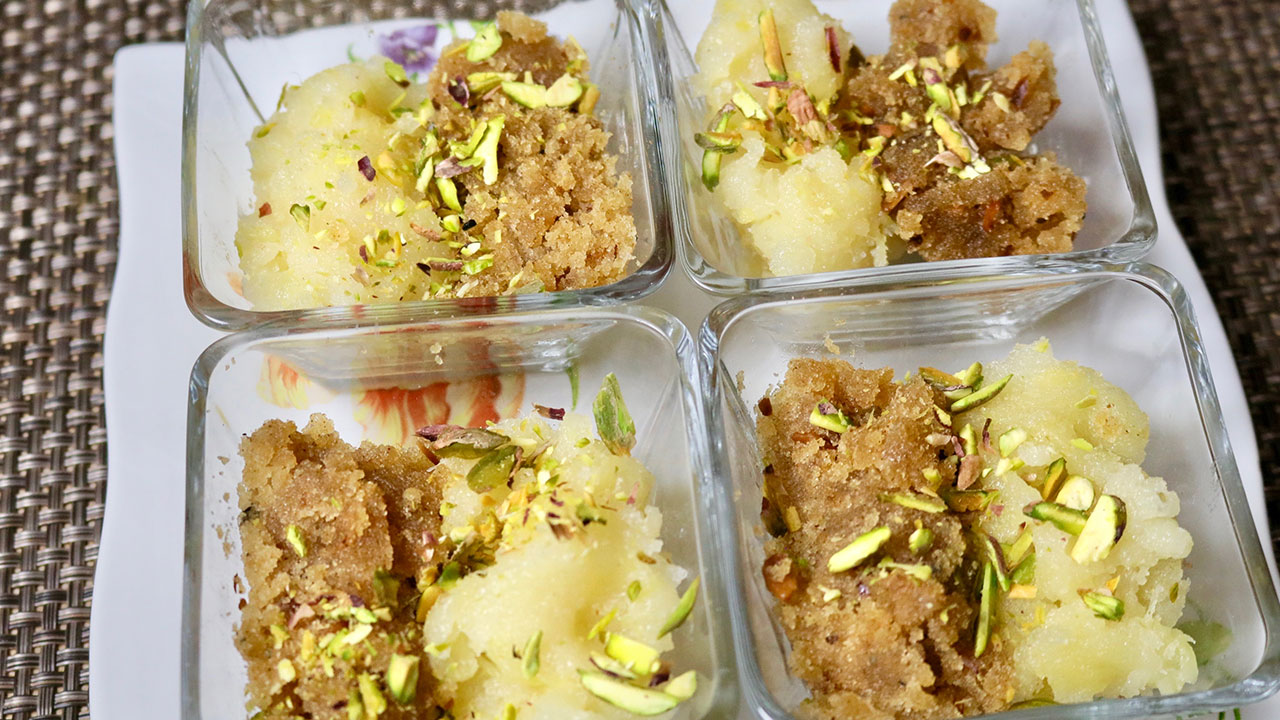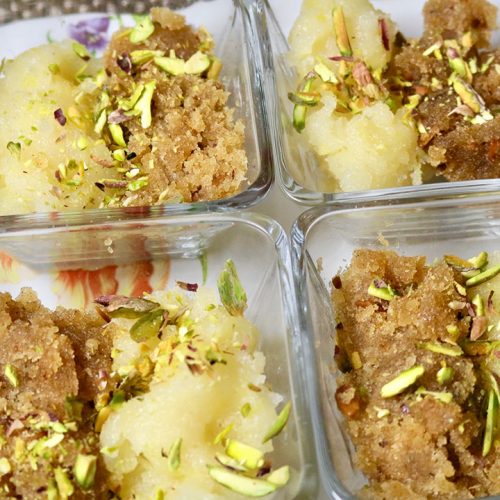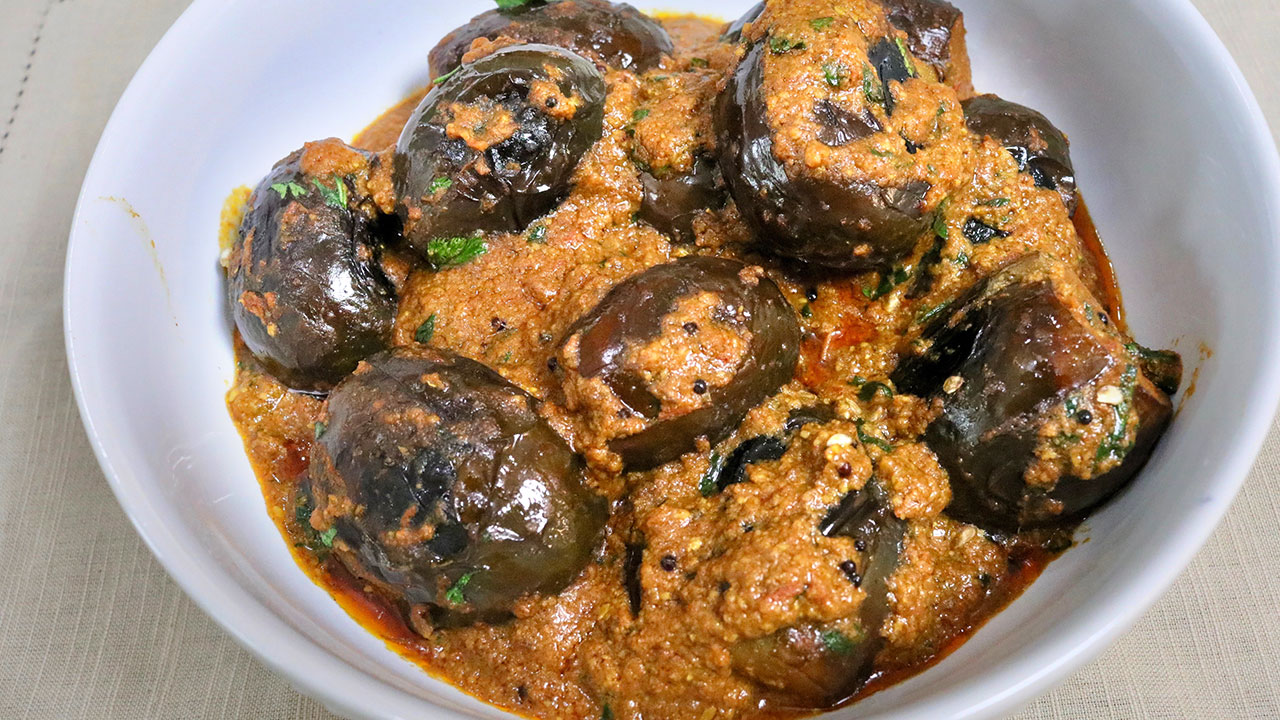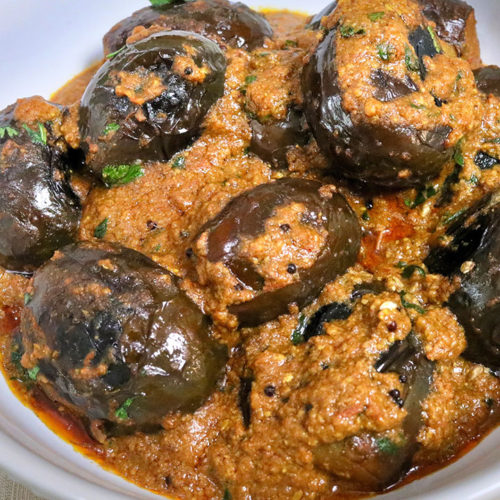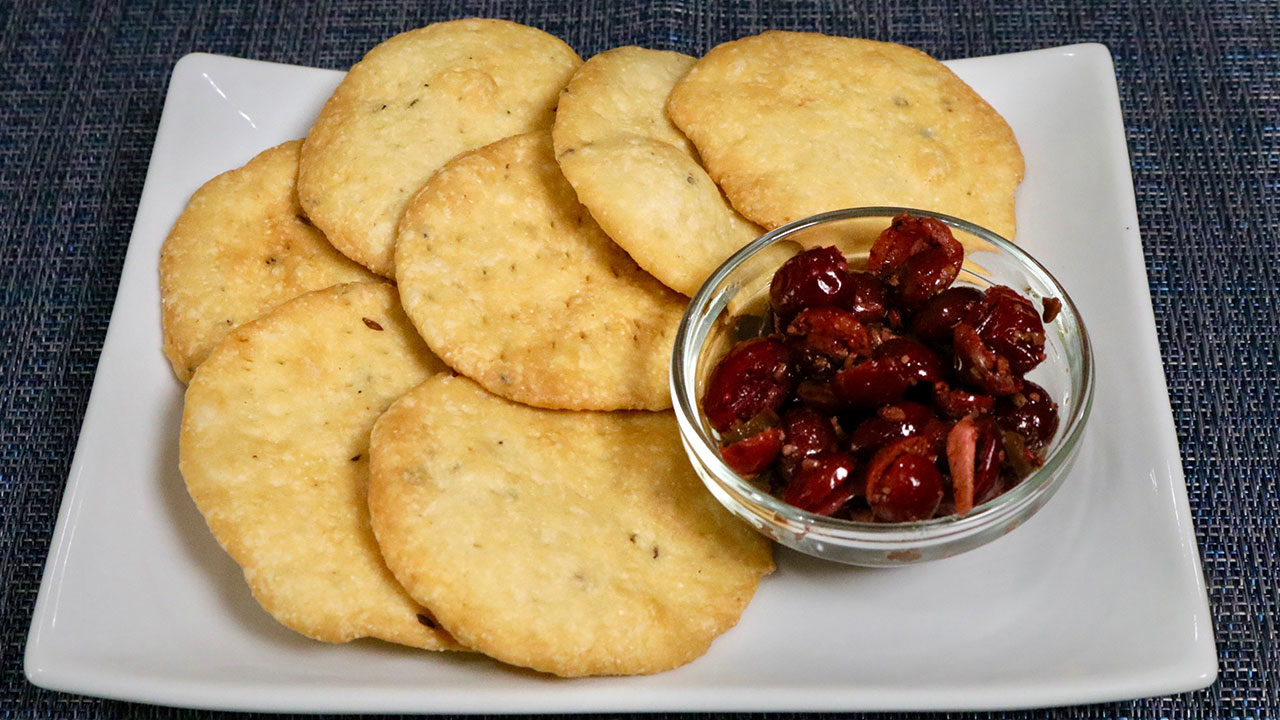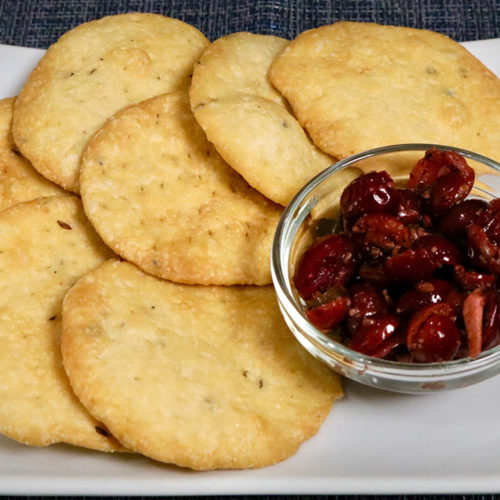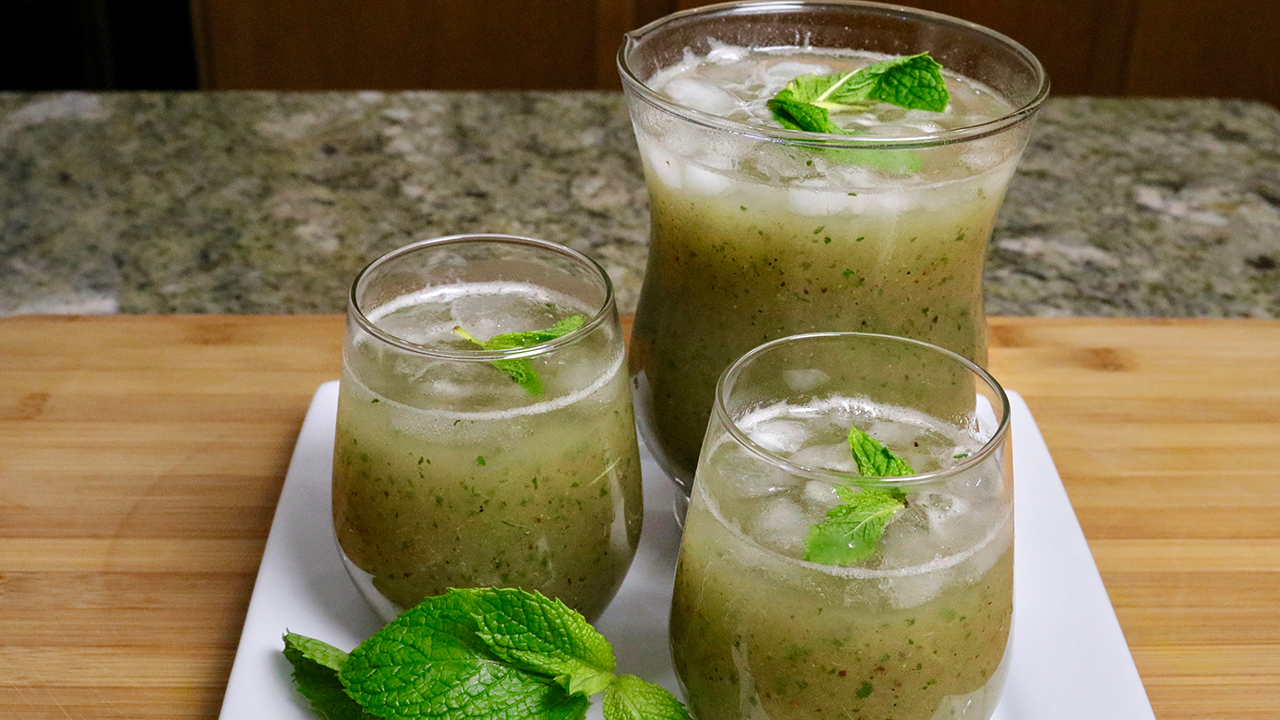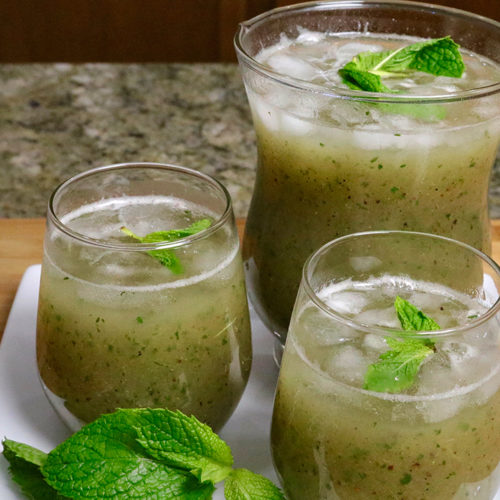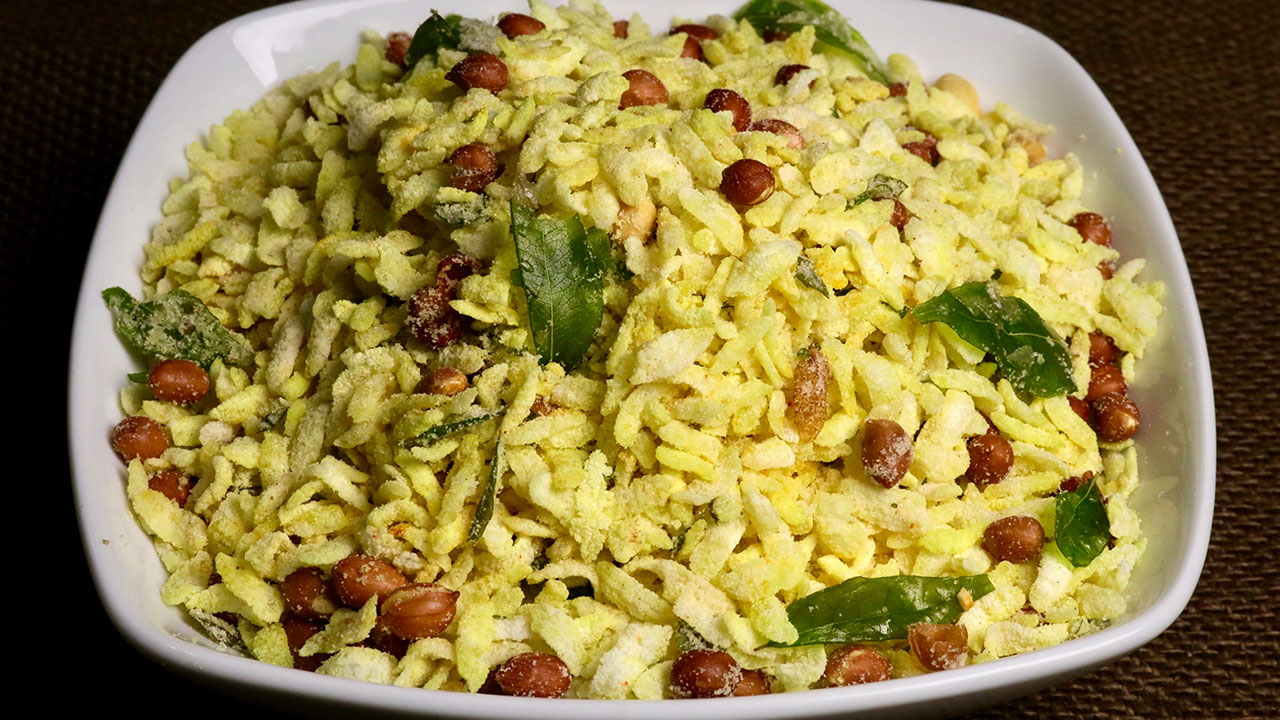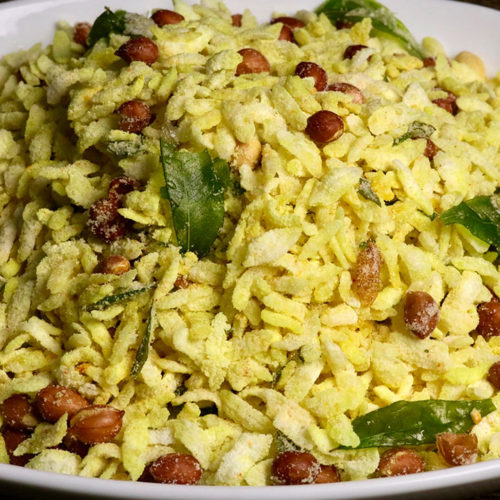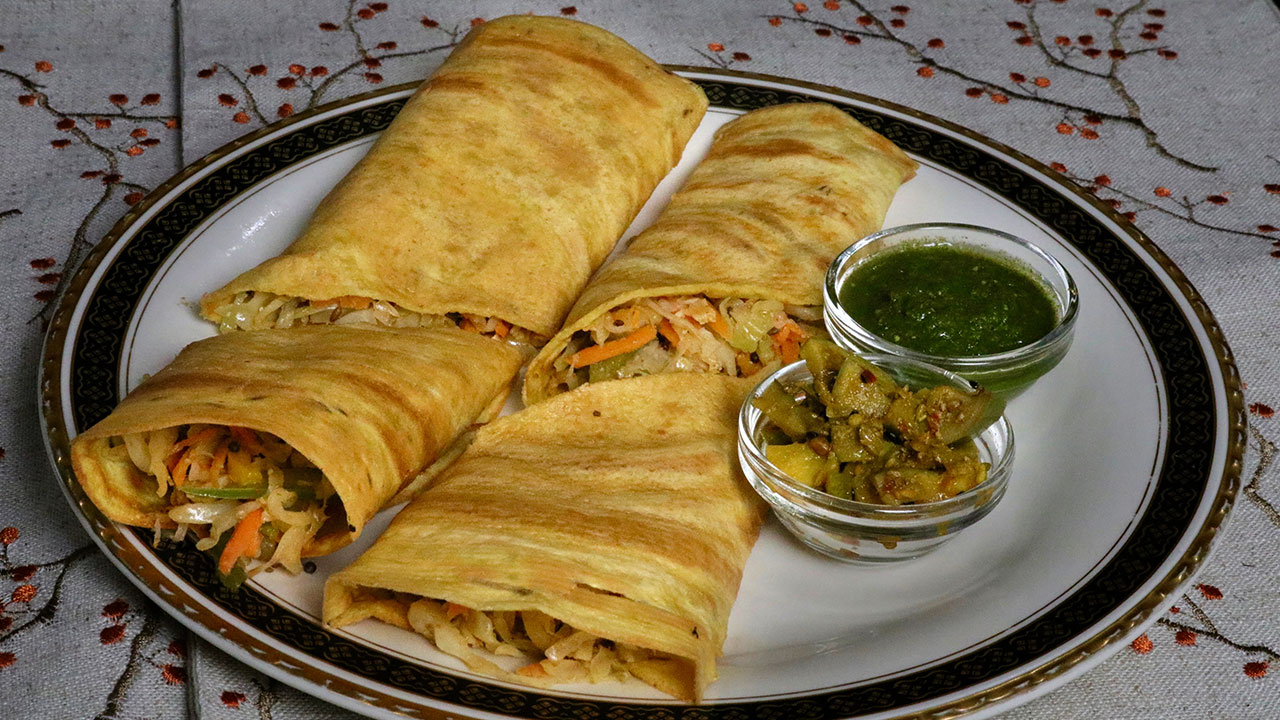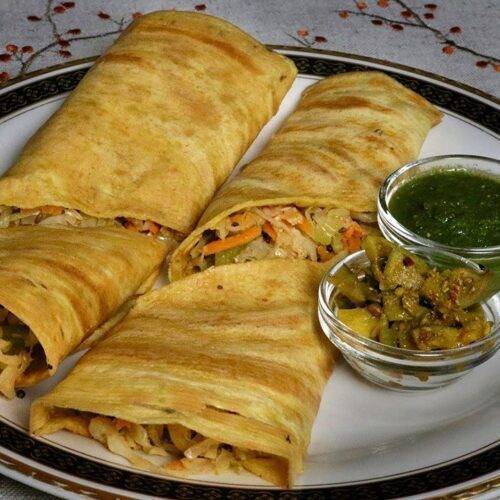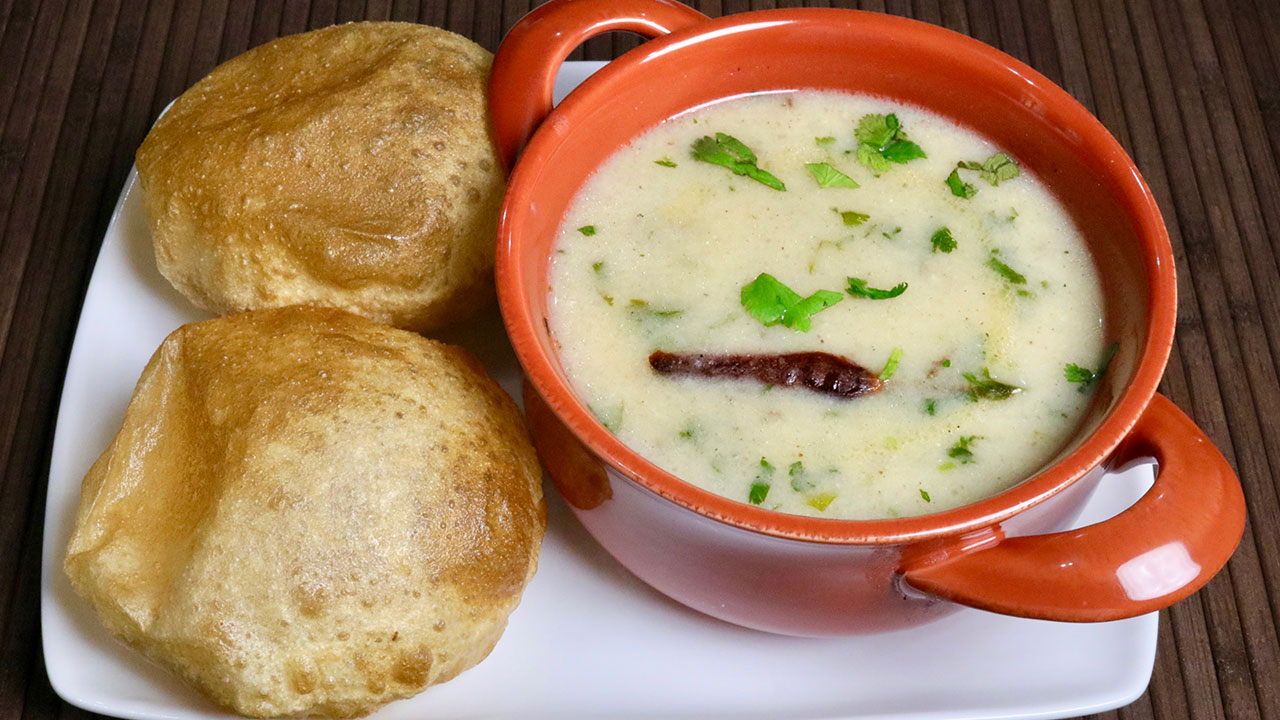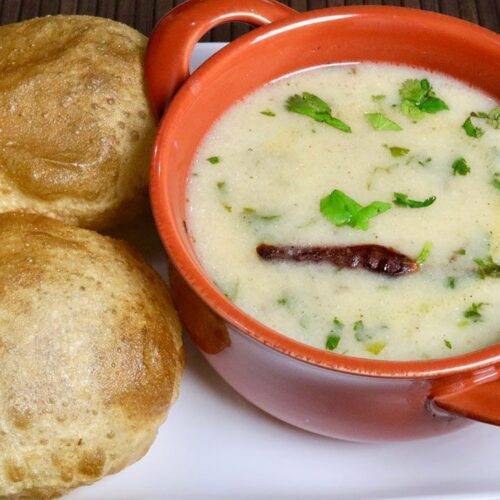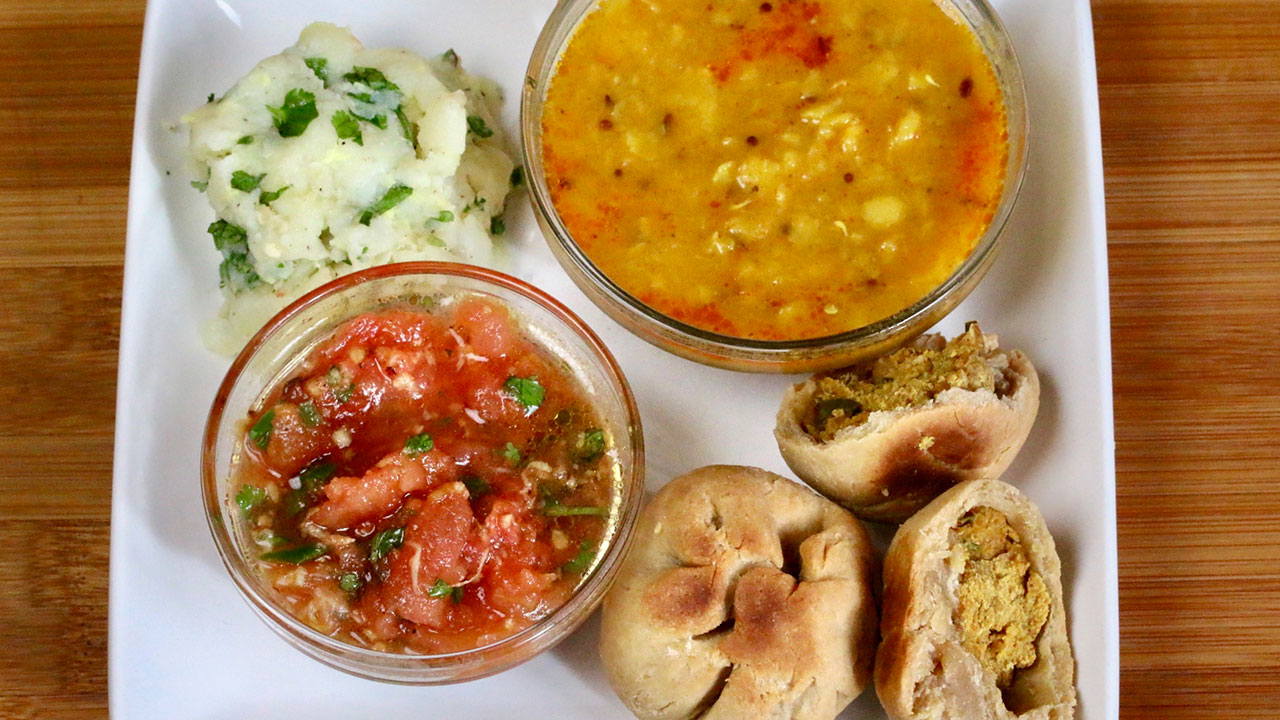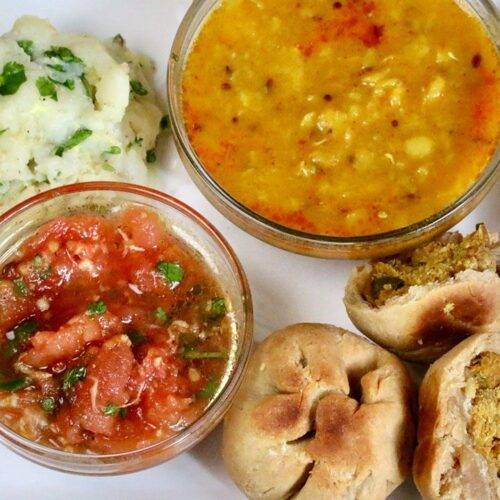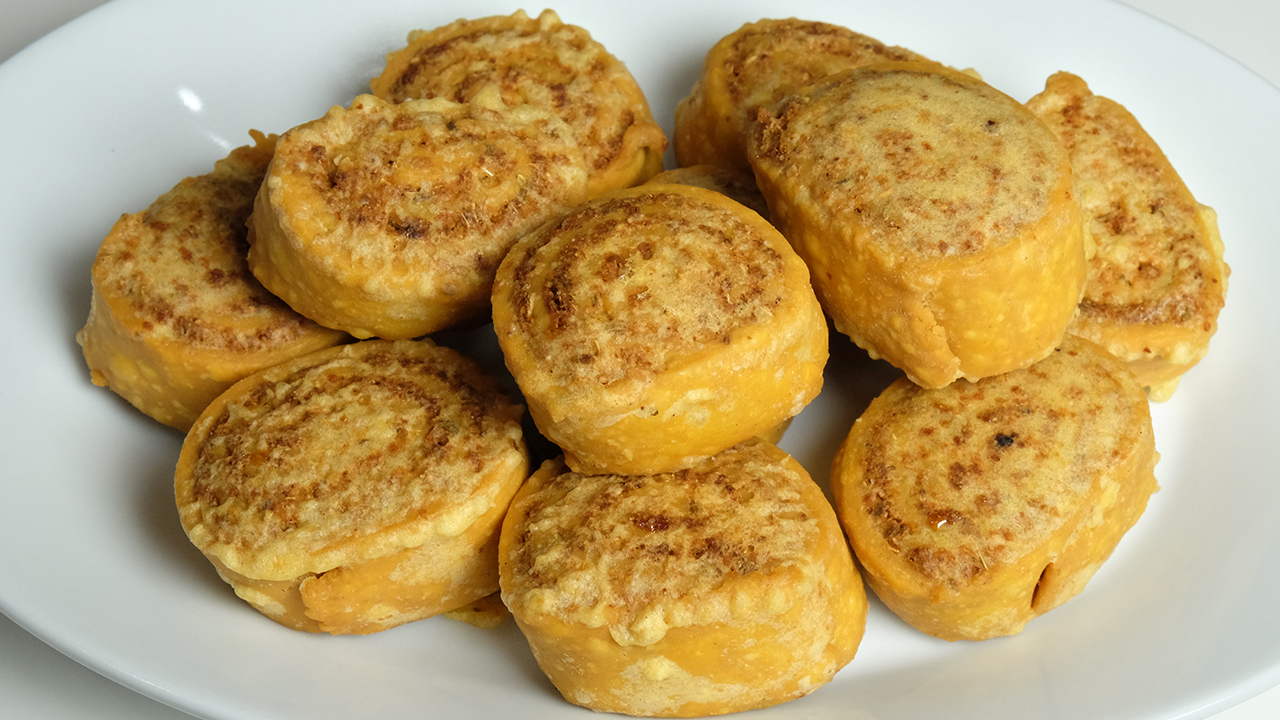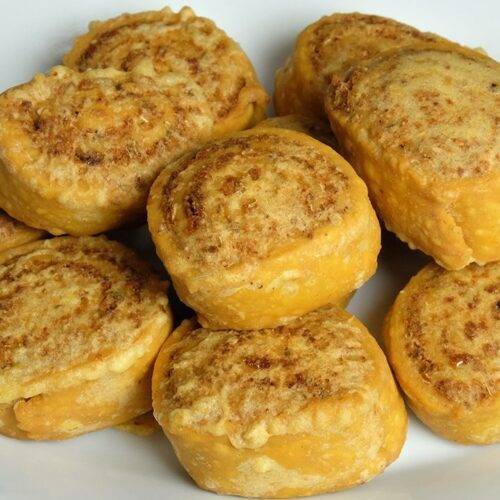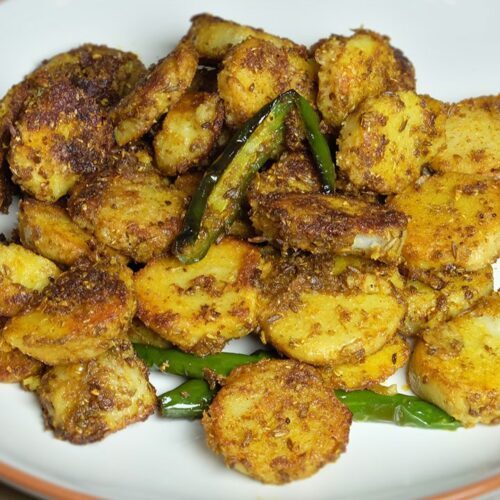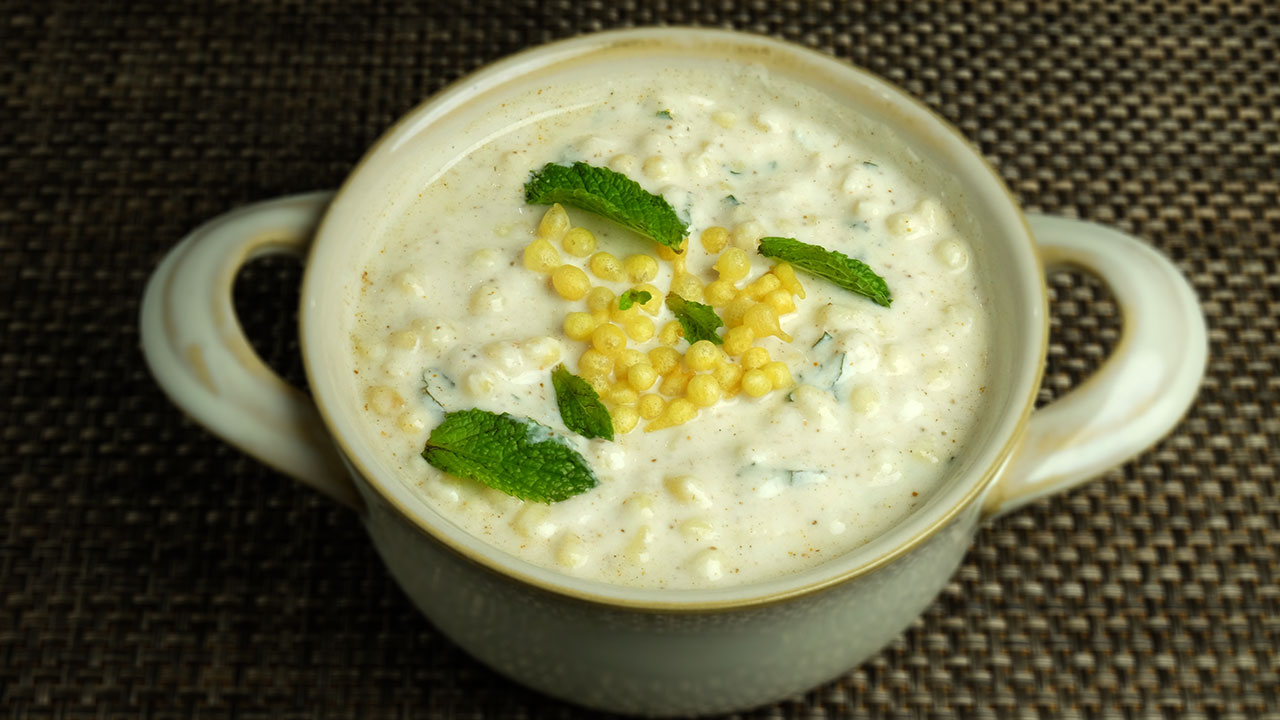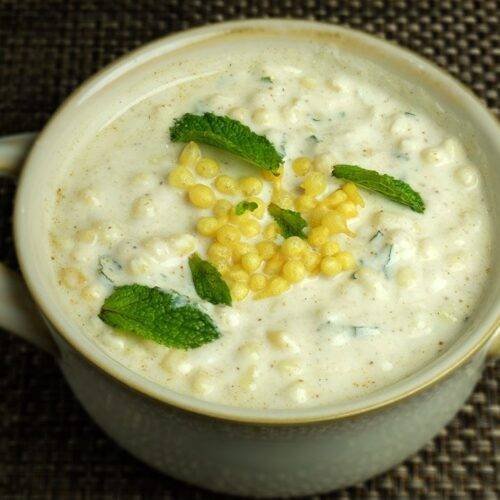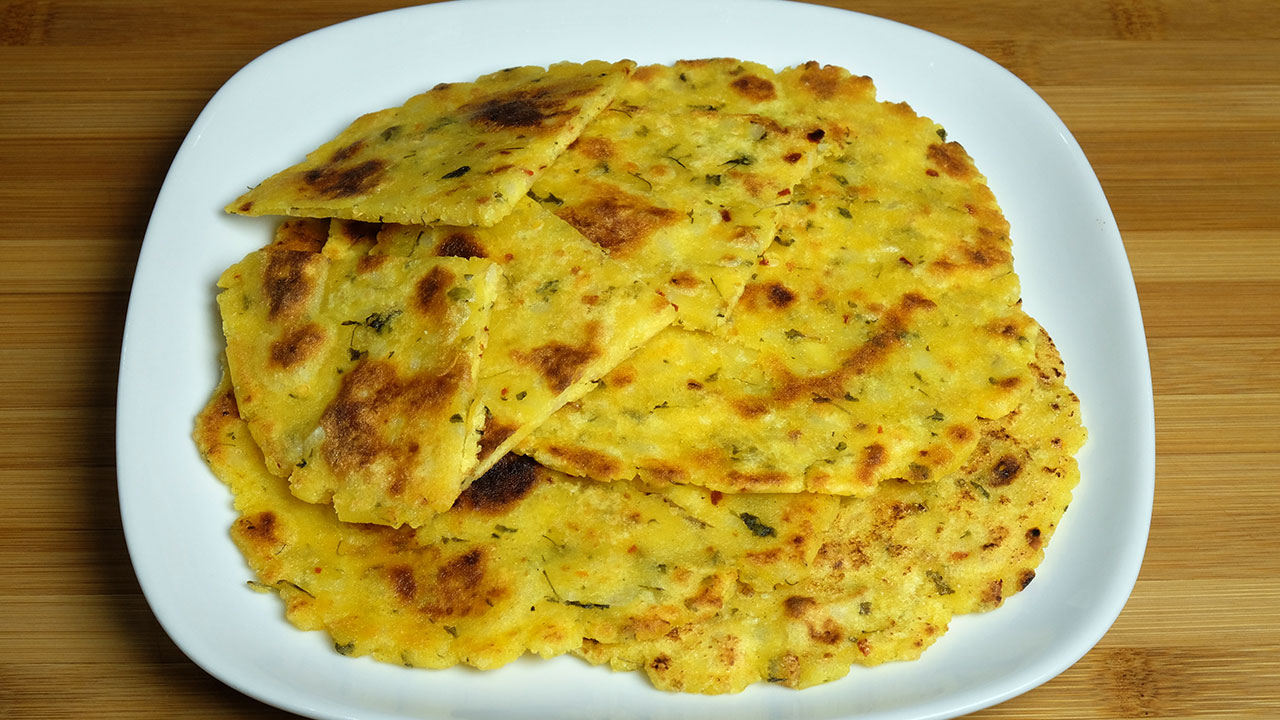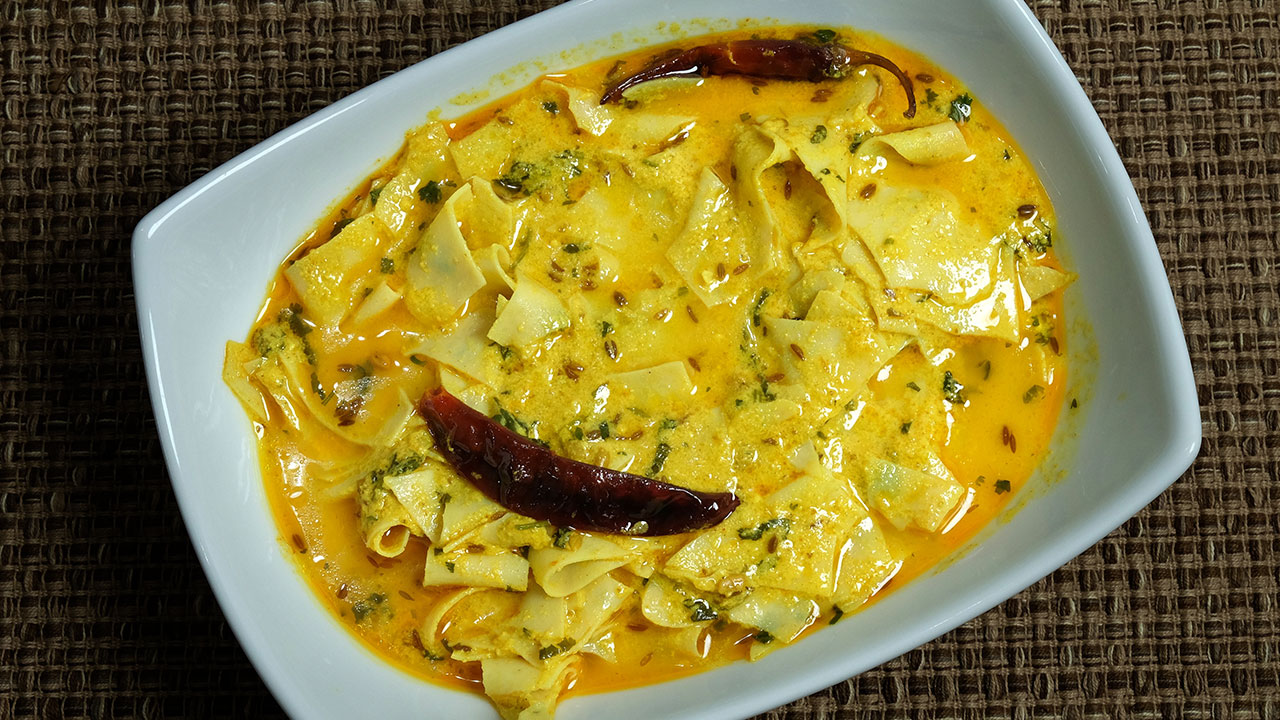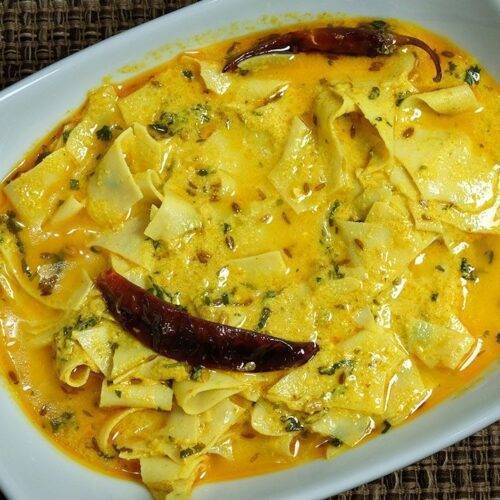Pithla (Besan Curry)
Ingredients
- 1 cup besan Bengal gram flour
- 2 Tbsp oil
- 1 tsp cumin jeera
- ½ tsp mustard seeds rai
- ⅛ tsp asafetida hing
- ½ tsp turmeric haldi
- ½ tsp red chili powder
- 1 tsp salt
- 1 ½ tsp mango powder aam choor
- 2 Tbsp cilantro finely chopped, hara dhania
- 4 cup water
For Garnishing
- 2 Tbsp ghee clarified butter, this is optional
- ¼ tap red chili powder
Instructions
- In a bowl add the 1-1/2 cups of water slowly to besan to make a smooth batter (batter should be consistency of pancake batter or dosa batter).
- Open the heat on medium high, oil should be moderately hot, when you add the cumin seeds to oil seeds should crack right of way.
- Add cumin seeds, mustard seeds, asafetida, turmeric, and chili powder to oil, stir and turn off the heat.
- Add the besan batter and open the heat to medium heat. Keep whipping the batter and batter will start thickening. Add salt and keep adding the water slowly and keep mixing about 2-1/2 cups of water. After Pithla comes to boil besan will start splattering. Reduce the heat to low, cover the pan and let it simmer for about 5 to 8 minutes.
- Pithla will become thick, add chopped cilantro and mango powder mix and let it cook for 2 more minutes. Pithla should be quite thick in consistency that’s why sometimes I will call Pithla Besa ki Sabji.
- Pithla is served hot before serving, traditionally Pithla is served garnished with hot ghee (clarified butter). And sprinkle of red chili powder. If you are vegan skip ghee, clarified butter.
Notes
How to make Besan Curry Recipe – Manjula’s Kitchen
Pithla Besan curry, a savory gram flour dish, is a testament to the rich culinary heritage of India. The besan gravy recipe combines simple ingredients to create a dish that is not only delicious but also a showcase of culinary prowess. This pitla recipe explores precision and technique coming together to create a symphony of flavors.
Pithla Besan, a savory delight hailing from the heart of Indian cuisine, is a testament to the versatility of besan (gram flour). This besan recipe, also known as Pitla, transforms this humble ingredient into a flavorful and comforting dish that can be relished with various accompaniments. Let’s embark on a detailed exploration of how to make besan curry recipe, unraveling the secrets and nuances that make this besan curry a culinary masterpiece.
1. Setting the Stage: Creating the Besan Batter
Begin besan curry recipe by preparing the besan batter, the foundation of Pithla Besan. In a bowl, slowly add 1-1/2 cups of water to the besan, ensuring a gradual and consistent pouring to avoid lumps. The goal is to achieve a smooth batter, akin to the consistency of pancake or dosa batter. This step sets the tone for the entire dish, ensuring a velvety texture that will coat each element in the curry.
2. The Culinary Prelude: Heating the Oil and Sizzling Seeds
As the besan batter rests, open the heat on medium-high, readying the oil for the symphony of spices. The oil should reach a moderate heat, and a crucial test involves adding cumin seeds. The immediate crackling of the seeds signifies the optimal temperature. Into this aromatic canvas, introduce cumin seeds, mustard seeds, asafetida, turmeric, and chili powder. Stir this spice medley, infusing the oil with a fragrant blend that will define the character of the besan curry.
3. Besan Ballet: Whipping and Simmering
With the spice-infused oil taking center stage, it’s time to introduce the besan batter. Open the heat to medium, and as you add the besan batter, the whipping action begins. This constant stirring is key as the batter thickens, absorbing the flavors of the spices. In this delicate dance, add salt, and slowly incorporate about 2-1/2 cups of water. The besan curry begins to take shape, and as it comes to a boil, be prepared for the besan to splatter, a sign that the magic is happening. Reduce the heat to low, cover the pan, and let it simmer for 5 to 8 minutes, allowing the flavors to meld and the besan to achieve its desired consistency.
4. The Grand Finale: Flavorful Additions and Simmering
As the Pithla reaches its zenith, add the final touches. The besan will have thickened substantially by now, creating a hearty base for additional ingredients. Introduce chopped cilantro and mango powder, elevating the besan curry to new heights. Let it simmer for an additional 2 minutes, allowing the flavors to meld seamlessly. The besan curry should now be thick and rich as part of the besan gravy recipe.
5. The Presentation: Serving Tradition on a Plate
Pithla Besan is best served piping hot, capturing the essence of its freshly-cooked perfection. Traditionally, it is garnished with hot ghee (clarified butter), adding a luxurious richness to the dish. A sprinkle of red chili powder adds a final touch, not just for aesthetics but to introduce a subtle kick that complements the other flavors. For those adhering to a vegan lifestyle, the ghee can be skipped without compromising the integrity of the dish.
In conclusion, the journey to create Pithla Besan is a delicate ballet of flavors, textures, and culinary finesse. From the creation of the besan batter to the sizzling symphony of seeds, the besan curry recipe is a testament to the artistry involved in Indian cuisine. With its rich, aromatic profile and velvety consistency, Pithla Besan invites you to savor a dish that celebrates the simple yet profound beauty of besan. Enjoy this besan curry with steamed rice, Indian bread: roti, naan, missa paratha, or as your heart desires, and revel in the joy of crafting a culinary masterpiece in the comfort of your kitchen.

